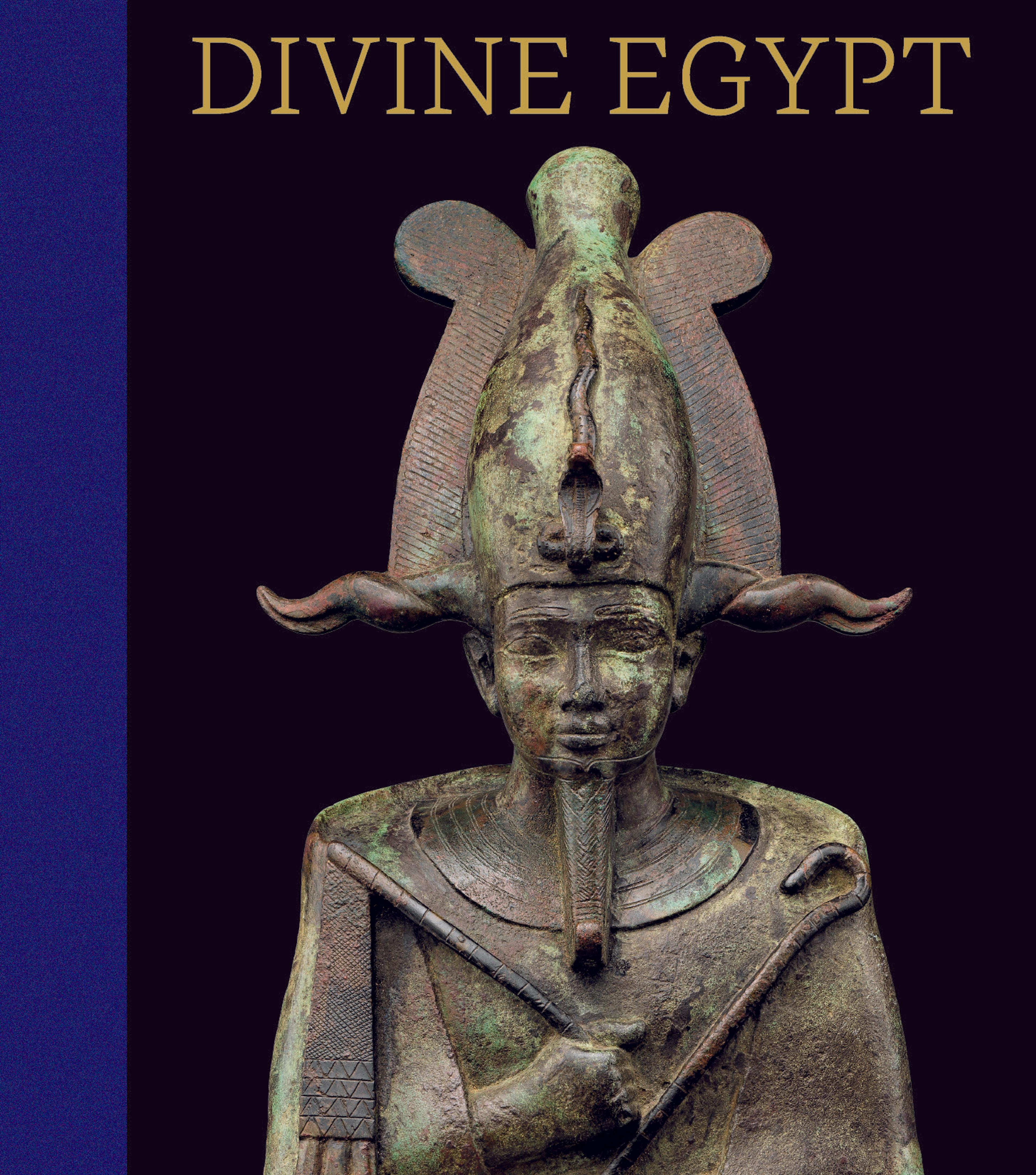Statue of lion-headed Wadjet inscribed for Minirdis, son of Panehsy and of Aarwt(?) whose parents are Horwedja and Nitocris
In the Late Period, impressively large metal statues of Wedjat as a lion-headed goddess, such as this one, and of Horus, the latter in either lion-headed or falcon-headed form, constitute a special group that evoke the legends of early kingship and the original primacy of Buto through symbols and vignettes on the sides of their thrones. The latter are unfortunately very damaged on this statue.
A recent study has illuminated the origin of this group and its meaning. Examples with a known provenance actually originate in Sais, and for a number of reasons it seems likely that all originate in Sais rather than Buto. In fact, Buto was quite near Sais, the dynastic seat of the 26th Dynasty. Apparently, the Buto gods had an important role and cult at Sais: it seems the Buto legends were understood as mythic precursors for the struggles and then ascendancy of the Saite dynasty in the Delta after the Third Intermediate Period.
The statue is inscribed with a request that Wadjet give life and health to the donor Minirdis, son of Pahnesy and Aarwt, whose (Aarwt's) parents were Horwedja and Nitocris.
Artwork Details
- Title: Statue of lion-headed Wadjet inscribed for Minirdis, son of Panehsy and of Aarwt(?) whose parents are Horwedja and Nitocris
- Period: Late Period, Saite Period
- Dynasty: Dynasty 26
- Date: 664–525 BCE
- Geography: From Egypt; Probably from Lower Egypt, Sais (Sa el-Hagar)
- Medium: Leaded bronze
- Dimensions: H. 62.9 × W. 17.5 × D. 39 cm, 26.1 kg (24 3/4 × 6 7/8 × 15 3/8 in., 57.6 lb.)
- Credit Line: Theodore M. Davis Collection, Bequest of Theodore M. Davis, 1915
- Object Number: 30.8.100
- Curatorial Department: Egyptian Art
Audio
609. Wadjet the Lioness
How did depictions of Wadjet evolve over time?
NARRATOR: Take a moment to study this lion-headed goddess. On her forehead is a large uraeus: a rearing cobra symbolizing royalty and divine authority. Her clenched hands likely once held an ankh and a scepter, both now lost. This is the goddess Wadjet.
Research associate Brendan Hainline:
BRENDAN HAINLINE: Wadjet is typically depicted as a cobra, and as a cobra, Wadjet was the goddess of Lower Egypt.
But in the late period, in the delta, she started being shown as a lion-headed goddess. In fact, a number of deities who weren’t traditionally shown as lion-headed started to be shown as lion-headed in the late period.
NARRATOR: We don’t know why. Felines had been associated with divinity throughout Egyptian history, venerated for qualities like agility, fertility, ferocity, and motherly care.
HAINLINE: Maybe Wadjet as a lion-headed deity is taking on more of those maternal roles; lionesses are very fierce, protective mothers…
NARRATOR: But it’s impossible to know for sure.
HAINLINE: There’s levels and there’s layers to these representations that we can try and get at, but without the cultural knowledge that Egyptians shared, it’s very difficult for us to say why exactly, with certainty, a deity is represented in the way that they are.
I think that we need to constantly remind ourselves that we are looking at over 3000 years of history. And ideas change.
More Artwork
Research Resources
The Met provides unparalleled resources for research and welcomes an international community of students and scholars. The Met's Open Access API is where creators and researchers can connect to the The Met collection. Open Access data and public domain images are available for unrestricted commercial and noncommercial use without permission or fee.
To request images under copyright and other restrictions, please use this Image Request form.
Feedback
We continue to research and examine historical and cultural context for objects in The Met collection. If you have comments or questions about this object record, please contact us using the form below. The Museum looks forward to receiving your comments.
